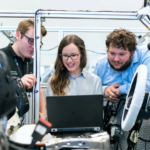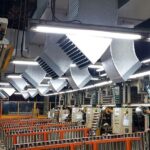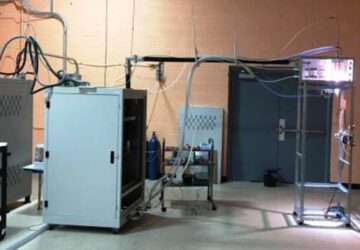Turbochargers have emerged as a popular term in the realm of automobiles, often linked with enhanced performance and efficiency. But what exactly is a turbocharger, and how is it different from a supercharger? In this guide, we’ll clarify the concept of turbochargers, detailing their operation, advantages, and important factors to consider for those thinking about turbocharging their vehicle.
What is a Turbocharger?
A turbocharger is a type of forced induction system that boosts the air pressure entering an engine. This increase in air pressure enables the engine to add more fuel, thereby generating additional power. Differing from a supercharger, which is mechanically driven by the engine, a turbocharger harnesses the power of the engine’s exhaust gases to rotate a turbine. This turbine then propels an air compressor, leading to the compression of incoming air.
How Does a Turbocharger Work?
- Exhaust Gas Utilization: The turbocharger utilizes the exhaust gases emitted from the engine to spin a turbine at high speeds.
- Compression of Air: This turbine is connected to a compressor via a shaft. As the turbine spins, it rotates the compressor, which draws in and compresses ambient air.
- Increased Oxygen Supply: The compressed air, now at a higher pressure, is fed into the engine’s intake manifold. This increased air density allows for more oxygen to be present during combustion.
- Enhanced Combustion: With more oxygen available, the engine can burn more fuel efficiently, resulting in increased power output and better engine performance.
Benefits of Turbocharging
Increased Power
A major benefit of turbocharging is the remarkable boost in engine power it provides. Turbochargers allow smaller engines to achieve power outputs similar to those of much larger ones. They accomplish this by pushing additional air, and as a result, more fuel, into the combustion chamber. This leads to a more intense explosion in each cylinder. Known as forced induction, this method can significantly elevate an engine’s horsepower and torque without relying on a bulkier, heavier engine. Such an enhancement in power is especially valuable in performance-oriented vehicles, and it’s also beneficial for regular vehicles, offering improved acceleration and enhanced overall driving performance.
Improved Efficiency
Turbochargers contribute to improved engine efficiency in a unique way. By utilizing the exhaust gases that would otherwise be wasted, turbochargers recycle this energy to drive the compressor. This process enhances the overall efficiency of the fuel combustion cycle. As a result, turbocharged engines can maintain or even improve fuel economy while delivering increased power. This efficiency is especially valuable in the context of rising fuel prices and growing environmental concerns, as it allows for a more economical operation of the vehicle without sacrificing performance.
Reduced Emissions
The efficiency of turbocharged engines also leads to environmental benefits. The enhanced air supply from a turbocharger leads to more efficient combustion, ensuring that the fuel burns more thoroughly. This thorough combustion process minimizes the presence of unburnt fuel and lowers the emissions of harmful gases like carbon monoxide, hydrocarbons, and nitrogen oxides. As a result, vehicles with turbochargers tend to have a reduced carbon footprint, contributing positively to global initiatives aimed at decreasing vehicle emissions and tackling the issue of climate change.
Versatility
Another significant advantage of turbochargers is their versatility. They can be fitted to a diverse array of engines, from compact, fuel-saving cars to substantial commercial and industrial machinery. This wide-ranging applicability has made turbocharging a favored option across various sectors, including passenger cars, trucks, marine crafts, and heavy-duty equipment. Additionally, the possibility of retrofitting turbochargers onto existing engines offers an appealing solution for boosting the performance of older vehicles or machinery. This approach can rejuvenate and enhance efficiency without the extensive and costly process of complete engine rebuilds.
Turbocharger vs. Supercharger
- Power Source: Turbochargers use exhaust gases, while superchargers are driven mechanically by the engine.
- Efficiency: Turbochargers are generally more efficient, as they utilize “waste” energy from the exhaust.
- Response Time: Superchargers often provide a quicker response than turbochargers, which can suffer from “turbo lag” – a delay in power delivery.
Considerations for Installing a Turbocharger
Engine Health
Before installing a turbocharger, it’s crucial to assess the health of your engine. Turbocharging introduces additional stress and demands on an engine, particularly on its internal components like pistons, bearings, and the crankshaft. If an engine is already weak or has underlying issues, such as worn-out parts or poor compression, adding a turbocharger can exacerbate these problems, potentially leading to severe engine damage. It’s advisable to conduct a thorough inspection and possibly upgrade certain components to ensure they can handle the increased power and pressure. This might include reinforcing the engine block, upgrading the cooling system, or using higher-grade oil to cope with the extra heat generated.
Professional Installation
The complexity of installing a turbocharger makes it a task best left to professionals. Proper installation requires not just mechanical expertise but also an understanding of the vehicle’s overall system, including the exhaust, fuel delivery, and cooling systems. Incorrect installation can lead to a range of problems, from reduced performance to severe engine damage. A professional installer can also provide valuable advice on the best type of turbocharger for your vehicle and its intended use, whether it’s for everyday driving, towing, or racing.
Maintenance
Owning a turbocharged engine often means adhering to a more rigorous maintenance schedule. Turbochargers operate under high temperatures and speeds, which can accelerate wear and tear. Regular checks and maintenance of the turbo system, including the turbocharger, intercooler, and related piping, are essential. It’s also important to use high-quality oil and change it regularly, as turbocharged engines can be more sensitive to oil degradation. Additionally, allowing the engine to idle for a short period before switching it off can help cool down the turbocharger, potentially extending its life.
Cost
The financial aspect of adding a turbocharger is a significant consideration. The cost isn’t limited to the turbocharger unit itself; it also includes additional components that may need to be upgraded, such as the fuel injection system, exhaust, and cooling system. The installation process can be labor-intensive, adding to the overall expense. Furthermore, the increased power output may lead to higher insurance premiums and possibly increased fuel consumption, depending on how the vehicle is driven. It’s important to weigh these costs against the desired benefits of turbocharging to determine if it’s a worthwhile investment for your particular situation.
Conclusion
Turbochargers offer a compelling way to enhance engine performance and efficiency. While they share some similarities with superchargers, their unique method of utilizing exhaust gases sets them apart. Whether you’re looking to boost your car’s performance or simply curious about how these systems work, understanding the basics of turbocharging is an exciting step into the world of advanced automotive technology.








